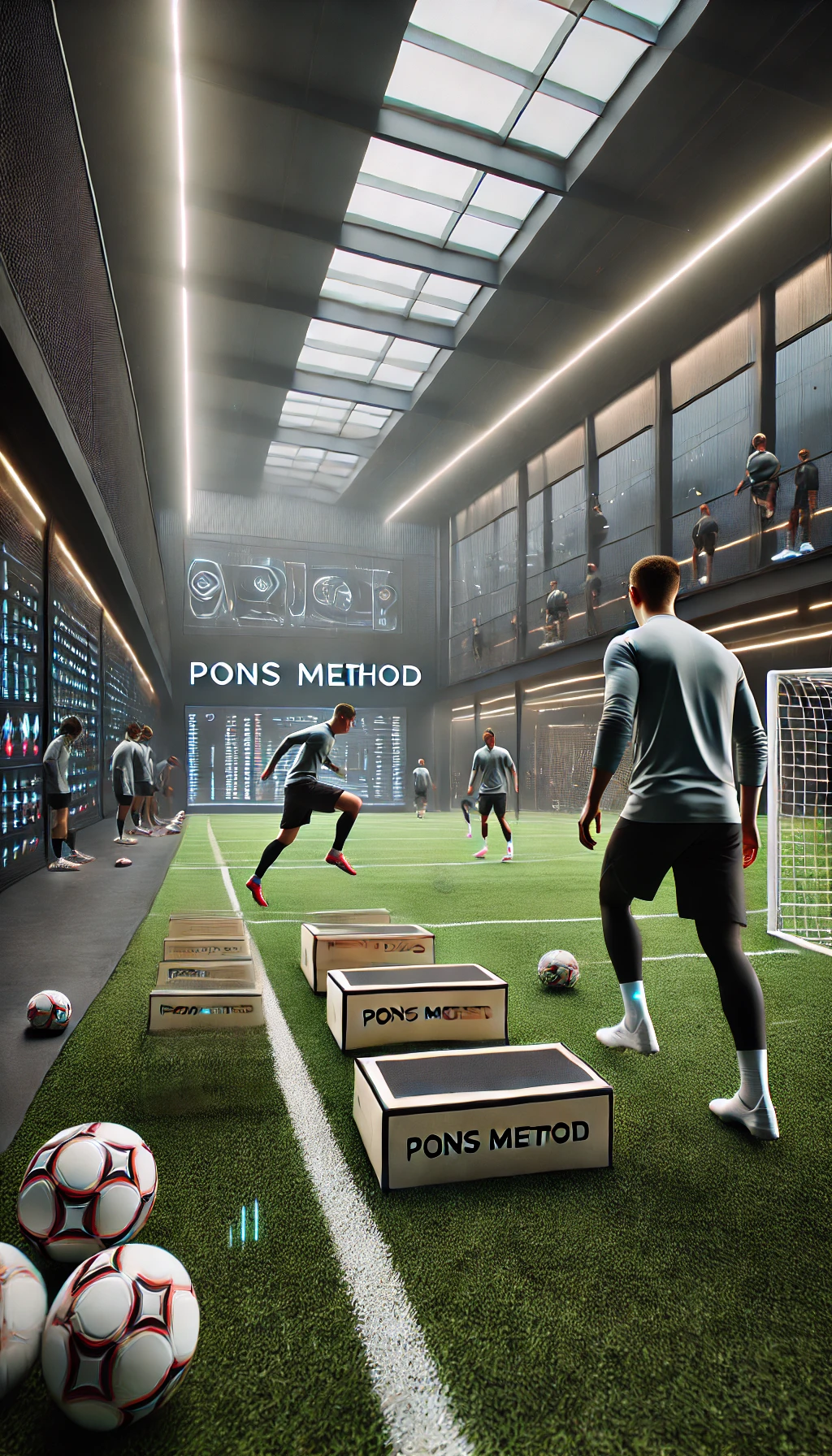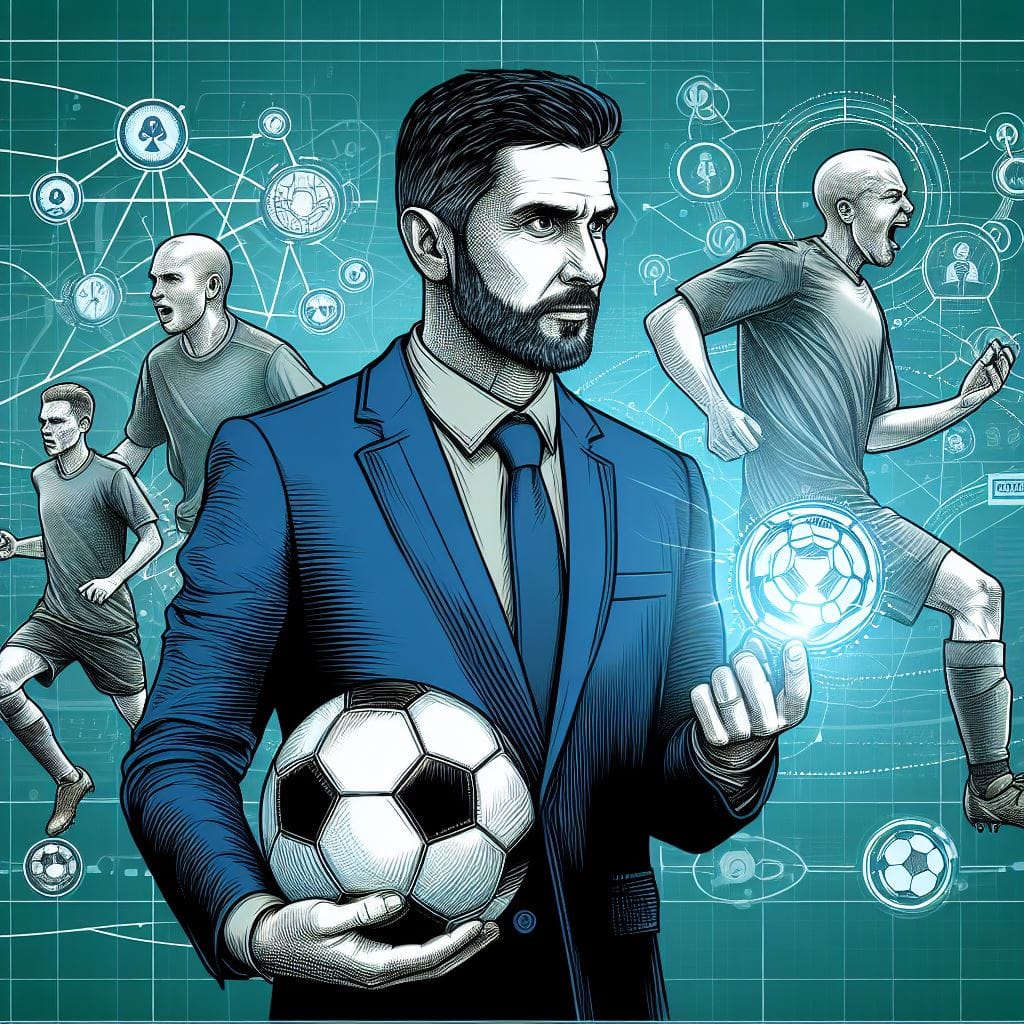In a learning context based on observation and visualization in football, mirror neurons can play a key role in the assimilation of movements, decision-making and anticipation of plays.
1. Motor learning by observation
Mirror neurons allow a player to internally activate the same neural circuits when observing an action as when executing it. This means that, when watching a teammate or rival make a pass, dribble or shot, the observer’s brain internally simulates the action, facilitating its learning without the need to physically execute it.
🔹 Example: A young footballer repeatedly watches his idol perform a curling shot. His brain activates the motor networks related to that movement, which facilitates its future execution when he practices it.
2. Mental visualization and anticipation
Mental visualization consists of imagining an action before performing it, which activates the same brain areas involved in the actual execution. This strengthens neural connections and helps improve accuracy and speed in decision-making.
🔹 Example: Before a match, a midfielder closes his eyes and visualizes how he receives the ball, turns, and makes a through ball to a teammate. This prepares his brain to execute that action in the real game.
3. Improves decision-making and collective play
Football is a dynamic sport where reading the game is essential. Mirror neurons not only help to imitate movements, but can also facilitate positional empathy, that is, the ability to anticipate what an opponent or teammate will do by understanding their intentions through their movements.
🔹 Example: A defender who observes a forward shaping up to shoot can anticipate his action and react before the attacker shoots at goal.
4. Automation of game patterns
With the repetition of observation and visualization, game patterns are consolidated in motor memory, allowing actions to be more fluid and automatic in pressure situations.
🔹 Example: A team that analyses possession plays for FC Barcelona internalises these movements and, with practice, executes them naturally during the match.
Conclusion
In complex football, where decisions must be made in milliseconds, mirror neurons allow players to learn faster, react with greater anticipation and improve their game intelligence without needing to physically execute each action. The Pons Method applies this principle by combining observation, visualisation and repetition, which optimises performance and decision-making on the field.
In a learning context based on observation and visualisation in football, mirror neurons can play a key role in the assimilation of movements, decision-making and anticipation of plays.
1. Motor learning by observation
Mirror neurons allow a player to internally activate the same neural circuits when observing an action as when executing it. This means that, when seeing a teammate or rival make a pass, dribble or shot, the observer’s brain internally simulates the action, facilitating its learning without needing to physically execute it.
🔹 Example: A young footballer repeatedly watches his idol perform a curling shot. His brain activates the motor networks related to that movement, which makes it easier to perform it in the future when he practices it.
2. Mental visualization and anticipation
Mental visualization consists of imagining an action before performing it, which activates the same brain areas involved in the actual execution. This strengthens neural connections and helps improve accuracy and speed in decision-making.
🔹 Example: Before a match, a midfielder closes his eyes and visualizes how he receives the ball, turns, and makes a through ball to a teammate. This prepares his brain to execute that action in the real game.
3. Improved decision-making and collective play
Football is a dynamic sport where reading the game is essential. Mirror neurons not only help to imitate movements, but can also facilitate positional empathy, that is, the ability to anticipate what a rival or teammate will do by understanding their intentions through their movements.
🔹 Example: A defender watching a forward lining up to shoot can anticipate his action and react before the attacker shoots at goal.
4. Automation of game patterns
With the repetition of observation and visualization, game patterns are consolidated in motor memory, allowing actions to be more fluid and automatic in pressure situations.
🔹 Example: A team that analyzes possession plays of FC Barcelona internalizes those movements and, with practice, executes them correctly.
4. Automation of game patterns
With the repetition of observation and visualization, game patterns are consolidated in motor memory, allowing actions to be more fluid and automatic in pressure situations.
🔹 Example: A team that analyzes possession plays of FC Barcelona internalizes these movements and, with practice, executes them naturally during the game.
Conclusion
In complex football, where decisions must be made in milliseconds, mirror neurons allow players to learn faster, react with greater anticipation and improve their game intelligence without needing to physically execute each action. The Pons Method applies this principle by combining observation, visualization and repetition, which optimizes performance and decision-making on the field.
Neural connections facilitate the automation of skills because the brain learns to do tasks with less cognitive effort as it strengthens and optimizes its neural circuits. This process occurs through synaptic plasticity, which is the brain’s ability to reorganize and strengthen connections in response to practice and experience.
How does skill automation occur?
Reinforcement of synaptic connections
Every time we repeat an action (for example, a pass in soccer), the connections between the neurons involved in that action are strengthened.
The same neural circuits are activated over and over again, increasing the efficiency of signal transmission.
Formation of “fast lanes” in the brain
With repetition, the brain stops processing the action as something new and creates an optimized circuit, reducing the need for conscious control.
It’s similar to how a dirt road becomes a highway with frequent use.
Involvement of the basal ganglia and cerebellum
These brain structures are key in the automation of movements.
Initially, the prefrontal cortex (related to attention and planning) is very active, but with practice, the activity is transferred to the basal ganglia and the cerebellum, allowing for more fluid and automatic movements.
Lower energy consumption and faster response speed
Automated actions require less mental effort, allowing the player to make faster and more effective decisions on the playing field.
For this reason, in the Pons Method, observation, visualization and repetition are powerful tools that reinforce these circuits, facilitating the automatic execution of sports skills with precision and speed.









Leave a Reply